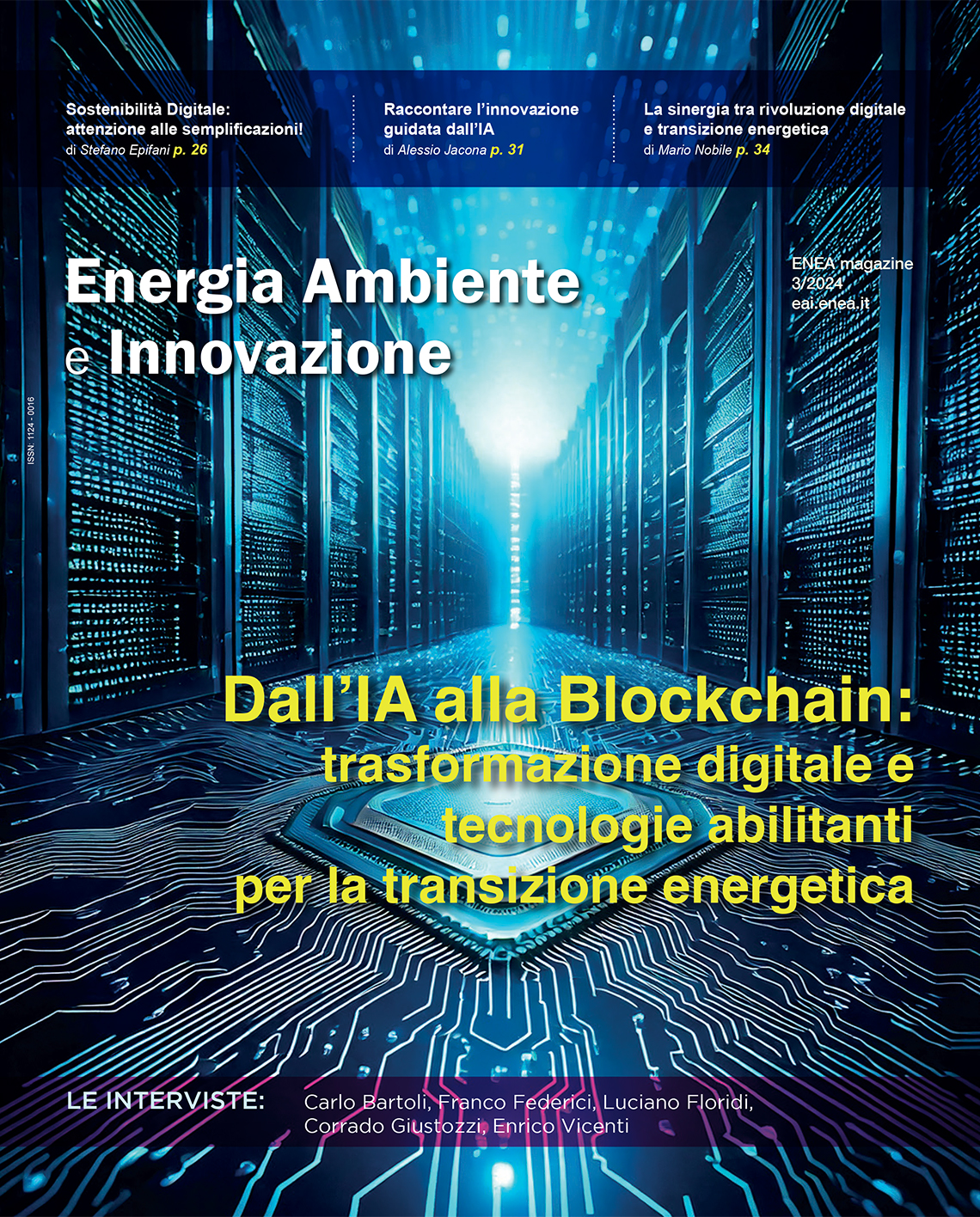
Foreward
by Sonia Manzo - ENEA, Technical Unit for Technologies Development - Portici Research Centre
and Paolo Massanisso - ENEA, Technical Unit for Environmental Characterization, Prevention and Remediation
Marine fouling: environmental concerns and counteracting strategies
The accumulation of unwanted matter on surfaces is a problem plaguing a variety of industries and human activities and is recognized by the term “fouling”, which is related to both biofouling and inorganic fouling.
In particular, inorganic fouling is referred to deposits from corrosion, crystallization, suspended particles, oil and ice, whereas biofouling describes the growth of micro- and macro-organisms on surfaces.
Biofouling is ubiquitous in the marine environment and is a major problem for the shipping industry. Indeed, the growth of organisms on a vessel hull increases the frictional drag which reduces the ship speed and consequently requires increased power and fuel consumption to maintain the same cruising speed.
The need for effective antifoulants preventing against the settlement and growth of marine organisms on all submerged structures – i.e., not only ship hulls but also oil rig supports, buoys and fish cages – is recognized worldwide as being of significant economic importance. This requirement has been a driving force for the development of antifouling (AF) paints technologies, a global industry that is now worth approximately US$ 5 billion annually.
Consolidated antifouling measures include the use of coatings based on toxicants, traditionally incorporated into a paint matrix, that gradually leach from the surface layer. The widespread use of toxicants in AF paints, tributyltin in particular, has resulted in high levels of contamination in the environment and has raised concerns about their effects on marine communities (shell malformation in oysters, mortality of mussel larvae and imposex in gasteropods), leading to policy actions to regulate their utilization. Therefore, to avoid these environmental alarms, the need has arisen for the continuous development of new non-toxic AF formulations, from non-toxic silicone-based coatings, known as foul release coatings, to innovative and new promising lines of research inspired by biomimetic solutions.
This special issue of EAI was born from the fundamentals of the Carisma project (Characterization and ecological risk analysis of antifouling biocides in the Southern Adriatic Sea), funded the by the Italian Ministry of Foreign Affairs, that aims to assess the quality of the portion of the Adriatic Sea between Italy (Apulia region) and Albania and, in particular, the environmental impact due to the use of antifouling paints. Actually, a large expertise in this field both in the analytical and ecotoxicological areas is far-back present at ENEA, as highlighted in the following section that provides a brief description of the "ENEA primary activities on antifouling biocides" and "ENEA main articles concerning antifouling biocides"..
This publication represents a wide-ranging reporting in the fouling/antifouling field and addresses a broad spectrum of the environmental issues. It wants to tackle and analyze the various aspects of fouling, with particular emphasis to biofouling, starting from the description of the biological phenomenon and of the main AF strategies, to the environmental impact, in terms of the amount of AF biocides released and the unwanted effects observed, reaching the definition of the ecological risk for the marine community. In addition, the legislative aspect is also addressed from different points of view: transposition and application, environmental protection and the REACH Regulation. In order to help readers, this issue is divided into three sections: 1) general characteristics of (bio)fouling and AF measures 2) analytical aspects and environmental concerns of AF biocides 3) national/international legislation.
We would like to thank all the contributors to this special issue and all experts in the field, coming from different public (such as ISPRA, CNR, the General Command of the Harbour, ASA and ENEA) and private Institutions (Boero Group and Shoreline), for sharing their expertise and experience with our readers.
Moreover, we would like to extend our thanks to all the staff of EAI, Dr. Diana Savelli, Dr. Giuliano Ghisu and Dr. Carla Costigliola for their advice and assistance, and to Dr. Carlo Cremisini, Head of the Technical Unit for Environmental Characterization, Prevention, and Remediation (ENEA-UTPRA).
Finally, it is our hope that readers will enjoy reading this special issue, the content of which will constitute a significant resource for all the Scientific actors and stakeholders, interested in this interdisciplinary field.
ENEA primary activities on antifouling biocides
|
International funded Projects |
Years |
Description and rule |
|---|---|---|
|
HIC-TBT (EU-LIFE, 98ENV/NL//000199) |
1999-2001 |
Assessment of the environmental distribution of TBT in Spain, Italy, Portugal in the North Sea in relation to its impact on marine life; development of communication strategies in order to sensitize the non-scientific community to the problem of TBT. Partner |
|
OT-SAFE (EU – 5th FP, QLK1-CT-2001-01437) |
2001-2004 |
EU-wide monitoring of contamination of fish products by organotin compounds and the related effect on human health, through the evaluation of the effect that cooking has on organotin compounds present in mussels. Partner |
|
TBTIMPACTS (EU – 6th FP, INCO 510658) |
2005-2009 |
Implications of TBT pollution and its ban, costs and benefits of TBT based antifoulants and other alternatives; environmental impact of organotin compounds in Europe and India coastlines and awareness towards this contaminant. Coordinator |
|
CARISMA (Italian Ministry of Foreign Affairs, Projects of major importance in the Scientific and Technological Collaboration Executive Programmes with Albania, PGR00123) |
2012-2014 |
Environmental impact of antifouling paints in the portion of the Adriatic Sea between Italy (Apulia region) and Albania and. Coordinator |
|
Certification and stability studies |
Years |
Description |
|---|---|---|
|
BCR 424, BCR 462, BCR 477, BCR 646, BCR 710 |
1991-2002 |
Preparation and certification of reference materials for organotin compounds in several environmental matrices (sediment, biota tissues). ENEA has acted as coordinator in BCR 447 and BCR 710 projects and as partners in the others certification campaigns. |
|
BCR 462, BCR 477, BCR 710 |
2000 - present day |
Stability studies on behalf of IRMM |
ENEA main articles concerning antifouling biocides published in peer-reviewed journals in the analytical and ecotoxicological areas
- T. Ferri, R. Morabito and A. Perini: "Organotin determination by GFAAS", in Heavy Metals in the Hydrological Cycle, Ed. M. Astruc and J.N. Lester, p. 413 - 418, London, (1988).
- S. Chiavarini, C. Cremisini, T. Ferri, R. Morabito and A. Perini: "Monitoring of organotins in the La Spezia gulf - I - Analytical methods and preliminary results (summer 1989)", Sci. Tot. Environ., 101, 217-227 (1991).
- M. Caricchia, S. Chiavarini, C. Cremisini, R. Morabito and R. Scerbo: "Organotin compounds in marine mussel collected from Italian coasts", Analytical Sciences, 7, 1193-1196 (1991).
- M. Caricchia, S. Chiavarini, C. Cremisini, M. Fantini and R. Morabito: "Monitoring of organotins in the La Spezia gulf - II. Results of the 1990 sampling campaigns and concluding remarks", Sci. Tot. Environ., 121, 133-144 (1992).
- S. Chiavarini, C. Cremisini, T. Ferri, R. Morabito and C. Ubaldi: "Liquid-solid extraction of butyltin compounds from marine samples", Appl. Organomet. Chem., 6, 147-153 (1992).
- M. Caricchia, S. Chiavarini, C. Cremisini, R. Morabito and C. Ubaldi: "Analytical methods for the determination of organotins in the marine environment", Int. J. Env. An. Chem., 53, 37-52 (1993).
- M. Caricchia, S. Chiavarini, C. Cremisini, R. Morabito and R. Scerbo: "Influence of the storage conditions on the organotin determination in mussel samples", Anal. Chim. Acta, 286, 329-334 (1994).
- Ph. Quevauviller, R. Ritsema, R. Morabito, W.M.R. Dirkx, S. Chiavarini, J.M. Bayona and O.F.X. Donard: "Critical Consideration with respect to the identification of tin species in the environment", Appl. Organomet. Chem., 8, 541-549 (1994).
- T. Ferri, F. Roberti, S. Chiavarini, C. Cremisini and R. Morabito: "Influence of tropolone on voltammetric speciation analysis of butyltin compounds", Appl. Organomet. Chem., 8, 587-593 (1994).
- R. Morabito, S. Chiavarini and C. Cremisini: "GC-MS for the speciation of organotin compounds in environmental samples", in: Quality assurance of Environmental Analysis within the BCR-programme, Ph. Quevauviller, E. Maier and B. Griepink Eds., Elsevier Publ., Chapter 17, 435-464 (1995).
- R. Morabito: "Speciation of organotin compounds in environmental matrices", Microchem. J., 51, 198-206 (1995).
- Ph. Quevauviller, S. Chiavarini, C. Cremisini, R. Morabito, M. Bianchi and H. Muntau: "Preparation and homogeneity study of a mussel candidate reference material for the certification of organotin compounds", Mikrochim. Acta, 120, 281-287 (1995).
- Ph. Quevauviller, M. Astruc, L. Ebdon, H. Muntau, W. Cofino, R. Morabito and B. Griepink: "A programme to improve the quality of butyltin determinations in environmental matrices", Mikrochim. Acta, 123, 163-173 (1996).
- F. Pannier, A. Astruc, M. Astruc and R. Morabito: "Determination of butyltin compounds in mussel samples: a comparative study of analytical procedures", Appl. Organomet. Chem., 10, 471-476 (1996).
- M.B. de la Calle-Guntinàs, R. Scerbo, S. Chiavarini, Ph. Quevauviller and R. Morabito: "Comparison of different derivatization methods for the determination of butyl- and phenyltin compounds in mussel by gas chromatographic methods", Appl. Organomet. Chem., 11, 693-702 (1997).
- R. Morabito, P. Soldati, M.B. de la Calle and Ph. Quevauviller: "An attempt to certify phenyltin compounds in a mussel reference material", Appl. Organomet. Chem., 12, 621-634, (1998).
- R. Morabito, P. Massanisso and Ph. Quevauviller: “Derivatization methods for the determination of organotin compounds in environmental samples”, TrAC, 19, 97-106, (2000).
- Pellegrino, P. Massanisso and R. Morabito: “Comparison of 12 selected extraction methods for the determination of butyl- and phenyl-tin compounds in mussel samples”, TrAC, 19, 97-106 (2000).
- S. Chiavarini, P. Massanisso, P. Nicolai, C. Nobili and R. Morabito: “Butyltins concentration levels and imposex occurence in snails from the sicilian coasts (Italy)”, Chemosphere , 50, 311-319 (2003).
- M.M. Santos, L. Filipe C. Castro, M.N. Vieira, J. Micael, R. Morabito, P. Massanisso, M.A. Reis-Henriques, “New insights into the mechanism of imposex induction in the dogwhelk Nucella lapillus”, Comparative Biochemistry and Physiology, Part C 141 (1), 101 – 109 (2005).
- C. Brunori, I. Ipolyi, P.Massanisso, R. Morabito, “ New trends in sample preparation methods for the determination of organotin compounds in marine matrices”, Handbook of Environmental Chemistry, Vol. 5: Water Pollution, 51-70, (2006).
- Manzo S., Buono S., Cremisini C., “Toxic effects of Irgarol and Diuron on sea urchin Paracentrotus lividus early development, fertilization, and offspring quality”, Archives of Environmental Contamination and Toxicology, 51, 61–68 (2006).
- G.Di Landa, G. Ansanelli, R. Ciccoli, C.Cremisini., “Occurrence of antifouling paint booster biocides in selected harbors and marinas inside the Gulf of Napoli”, Marine Pollution Bulletin, 52, 1541–1546 (2006)
- N.S. Thomaidis, S. Stasinakis, G. Gatidou, R. Morabito, P. Massanisso, T. D. Lekkas, “Occurrence of Organotin Compounds in the Aquatic Environment of Greece”, Water, Air, & Soil Pollution, 181 (1-4), 201-210 (2007)
- Manzo S., Buono S. and Cremisini C. Predictability of Copper, Irgarol and Diuron combined effects on sea urchin Paracentrotus lividus. Archives of Environmental Contamination and Toxicology, 54 (1): 57-68 (2008)
- S. Jadhav, N.B Bhosle, P. Massanisso, R. Morabito, “Organotins in the sediments of the Zuari estuary, west coast of India”, Journal of Environmental Management, 90 (suppl. 1), 4-7 (2009)
- G. Di Landa, L.Parrella, S. Avagliano, G. Ansanelli, E. Maiello, C. Cremisini, “Assessment of the Potential Ecological Risks Posed by Antifouling Booster Biocides to the Marine Ecosystem of the Gulf of Napoli (Italy)”. Water, Air, & Soil Pollution, 200, 305–321, (2009)
- S.Manzo, G. Ansanelli, L. Parrella, G. Di Landa, P. Massanisso, S. Schiavo, C. Minopoli, B. Lanza, R.Boggia, P. Aleksi , A. Tabaku, “A first evaluation of the threat posed by antifouling biocides in the Southern Adriatic sea”, accepted for publication in Environmental Science: Processes & Impacts (2014)

